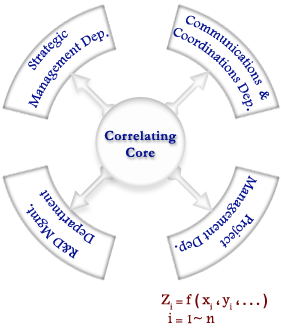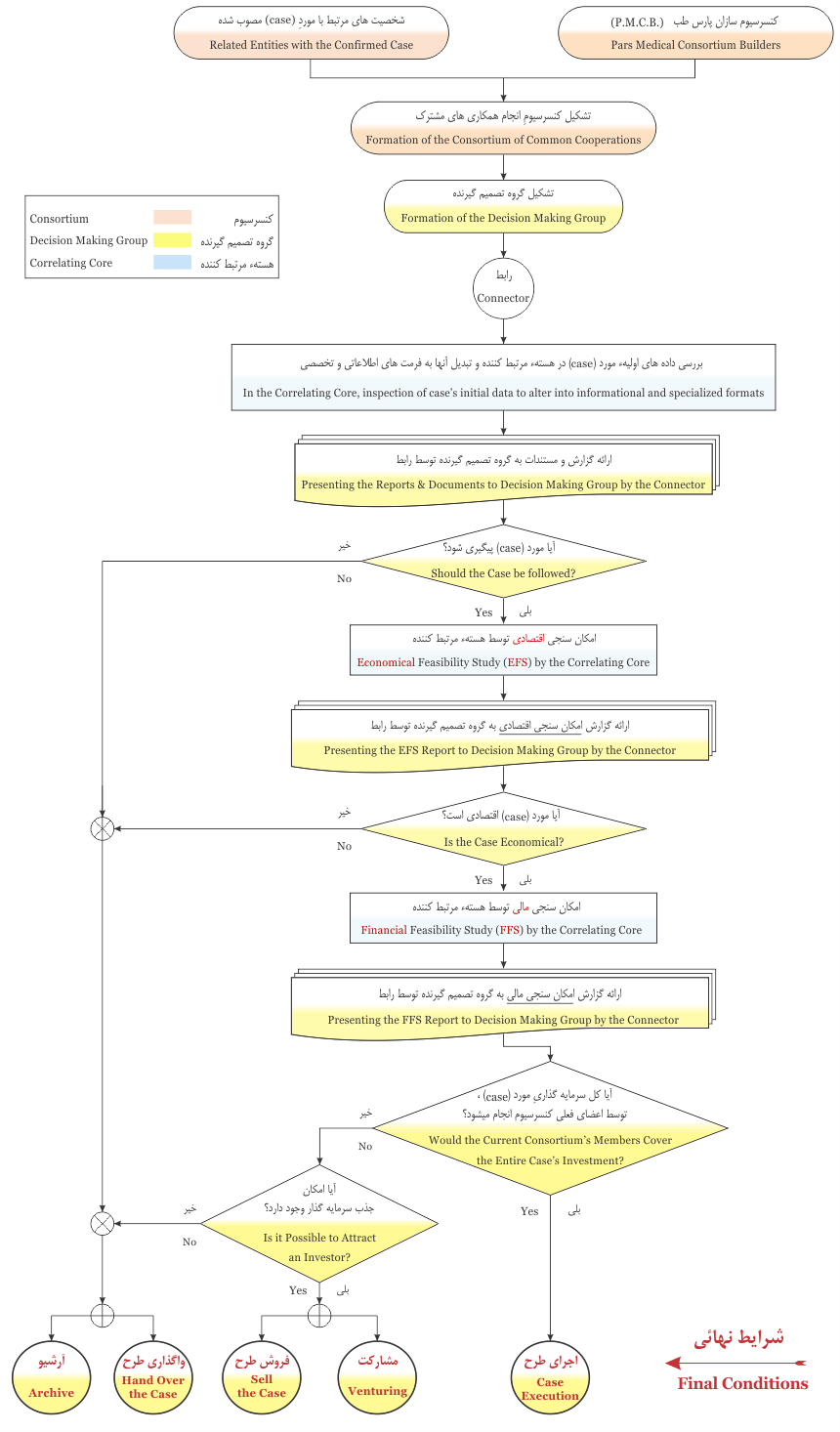
Definition of F.M.S., Target Entities, Decision Making Group, Correlating Core, Connector,
and Case Investigation Executing Flowchart
F.M.S. (Functional Managing System) is an executive consortium builder system. In this system, the managing method is a function of the conditions of a case where a consortium will begin to take form for that case.
Target Entities are the trustworthy entities who are requested for advising, exchanging the experiences, and/or cooperating in consortiums for synergy of their potential resources (facilities, connections, experiences, and skills).
In F.M.S. if a case were to be given to P.M.C.B., and cooperation with target entities of the case were to be confirmed by the company, and these entities were to agree about the supplement of resources, the case would be followed as below:
A Consortium will be defined and formed by the P.M.C.B. and target entities (written or non-written).
To speed up the decision making process, some representatives will be defined and announced on behalf of P.M.C.B. and the members of the consortium (i.e. target entities). These delegates accept the responsibilities as "Decision Making Group" regarding their election regulations.
To conduct the executive affairs by cooperating with the decision making group, P.M.C.B. would form a Correlating Core including several departments based on necessities of the executive flowchart for case investigation (the flowchart has been described below).
According to the requirements of the case, the duties of the departments will be defined and a manager will be appointed for each department.
In other words, the correlating core is the group of the departments' managers who have been selected and invited for cooperation from qualified people (either members or non-members of the P.M.C.B.).The managers of the departments will form different workgroups according to requirements of the case and will act based on the "Case Investigation Executing Flowchart".
A connector(s) will be selected to exchange the decisions and results between the decision making group and the correlating core.
After meeting the abovementioned conditions (i.e. formation of the consortium, decision making group, correlating core, and connector), the cooperation starts and it will be continued to achieve the final conditions of the "Case Investigation Executing Flowchart."
Note:
If other entities were to be invited to the consortium during the completion of the case, one or several delegates would be introduced by and on behalf of those entities. The new representative(s) will cooperate in the decision making group.
Notes:
When the final conditions of the flowchart are reached, responsibility of the members of the correlating core will end and existence of the P.M.C.B. and/or each member of the correlating core in the final conditions would depend on the situations of the final conditions.
Based on existing mutual trust between the consortium's members, in order to cut the costs and minimize the duration of the cases from the beginning to the final conditions of the flowchart, the effort will be made to gain from the free capacity of resources (i.e. facilities, connections, experiences, and talents) of the members as much as possible; And the effort will be made to prevent the creation of new and parallel facilities and resources that are a waste of time and assets.



Xi, Yi, etc. are variables that are defined by the case's properties. These variables will define the consortium's members, decision making group, correlating core, departments, and managers.
Zi is a type of F.M.S. (functional managing system) which illustrates the structure between the correlating core and its departments in each case; And the consortium members, decision making group, correlating core, departments, and their managers have been defined based on conditions of Xi, Yi, etc.
Note:
If other entities were to be invited to the consortium during completion of the case, and one or several delegates were to be introduced to the decision making group by those entities, obviously, some changes will be made in the correlating core and departments, and a new managing system (i.e. Z) will be defined.





.



